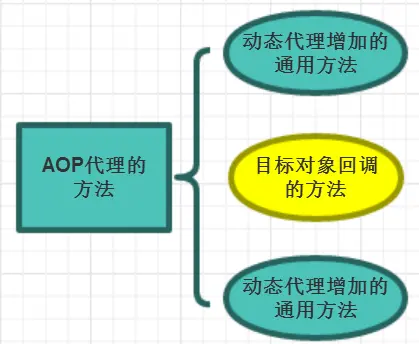Proxy创建动态代理的两个方法:
//方法一static Class<?> getProxyClass(ClassLoader loader, Class<?>...interfaces);//方法二static Object newProxyInstance(ClassLoader loader, Class<?> interfaces, InvocationHander hander);
方法一:创建一个动态代理类所对应的Class对象,该代理类将实现interfaces数组所指定的多个接口。第一个ClassLoader参数指定生成动态代理类的类加载器。方法二:直接创建一个动态代理对象,该对象的实现类实现了interfaces数组指定的系列接口,执行代理对象的每一个方法时都会被替换成InvocationHandler接口(自己创建一个类实现该接口)的实例的invoke方法。(实际上方法一需要创建对象的话,也是要一个InvocationHandler对象的)。
InvoactionHandler的使用方法:
//接口public interface Person {void walk();void sayHello(String name);}
public class MyInvocationHandler implements InvocationHandler{@Overridepublic Object invoke(Object proxy, Method method, Object[] args) throws Throwable {System.out.println("---正在执行的方法:"+method);if (args!=null){System.out.println("下面是执行该方法时传入的实参为:");for (Object val:args){System.out.println(val);}}else System.out.println("该方法没有实参");return null;}}
public class MainTest {public static void main(String args[]) throws Exception {InvocationHandler handler=new MyInvocationHandler();//注意这里的Person是一个接口interface。Person p= (Person) Proxy.newProxyInstance(Person.class.getClassLoader(),new Class[]{Person.class},handler);p.walk();p.sayHello("孙悟空");}}
AOP代理:
AOP代理可替代目标对象,AOP代理对象包含了目标对象的全部方法,但AOP代理中的方法与目标对象的方法存在差异:AOP代理里的方法可以在执行目标方法之前、之后插入一些通用处理。

例子:
- 思路:创建Dog对象和他的GunDog实现类,创建InvocationHandler的实现类MyInvocationHandler, 在invoke方法中调用目标对象的方法,并且在方法前后加入自定义的Utils类的方法, 创建代理对象工厂类MyProxyFactory,用于生产代理对象。
public interface Dog {void info();void run();}
public class GunDog implements Dog {@Overridepublic void info() {System.out.println("我是一只猎狗");}@Overridepublic void run() {System.out.println("我奔跑迅捷");}}
public class Util {public void method1(){System.out.println("----模拟第一个通用方法----");}public void method2(){System.out.println("----模拟第二个通用方法----");}}
public class MyInvocationHandler implements InvocationHandler {//被代理的对象;private Object target;public void setTarget(Object object) {this.target = object;}@Overridepublic Object invoke(Object proxy, Method method, Object[] args) throws Throwable {Util u = new Util();u.method1();//注意这里第一个参数不要放proxy进去,因为我们要为指定的target生成动态代理对象//放proxy是新生成的动态代理对象。Object result = method.invoke(target, args);u.method2();return result;}}
public class MyProxyFactory {public static Object getProxy(Object target){//创建一个MyInvocationHandler对象MyInvocationHandler handler=new MyInvocationHandler();//设置指定的要生成动态代理的target对象handler.setTarget(target);//创建并返回一个动态代理对象。return Proxy.newProxyInstance(target.getClass().getClassLoader(),target.getClass().getInterfaces(),handler);}}
public class MainTest {public static void main(String args[]) throws Exception {GunDog dog=new GunDog();Dog proxyDog= (Dog) MyProxyFactory.getProxy(dog);proxyDog.info();proxyDog.run();}}
打印:
----模拟第一个通用方法----我是一只猎狗----模拟第二个通用方法--------模拟第一个通用方法----我奔跑迅捷----模拟第二个通用方法----

